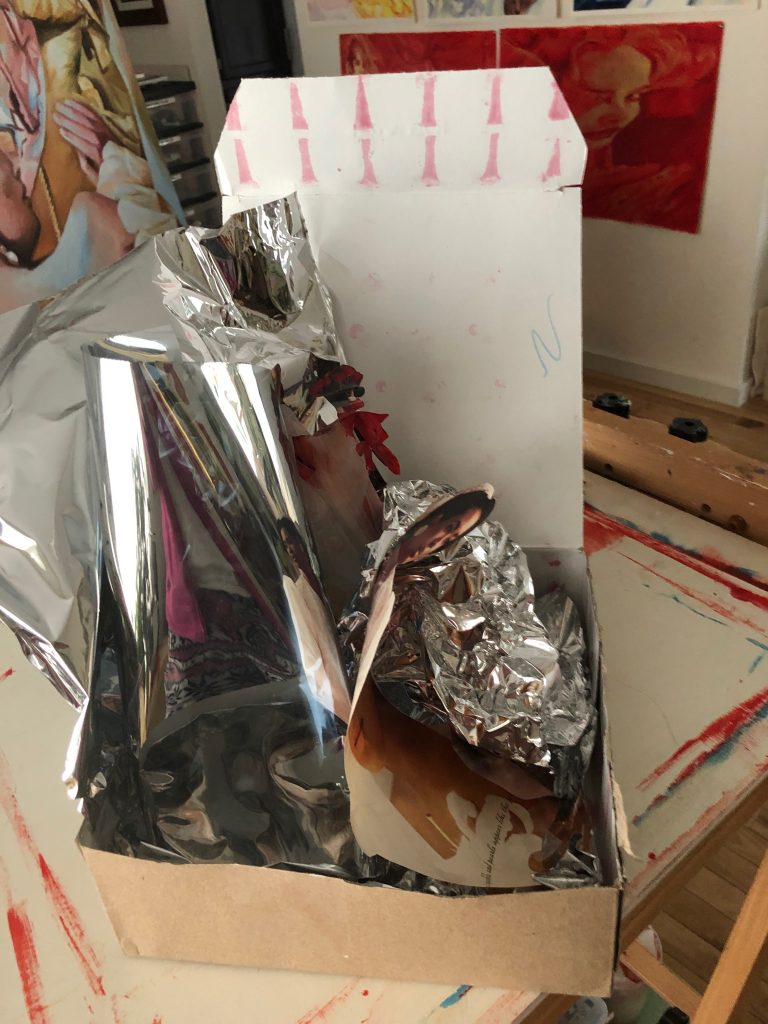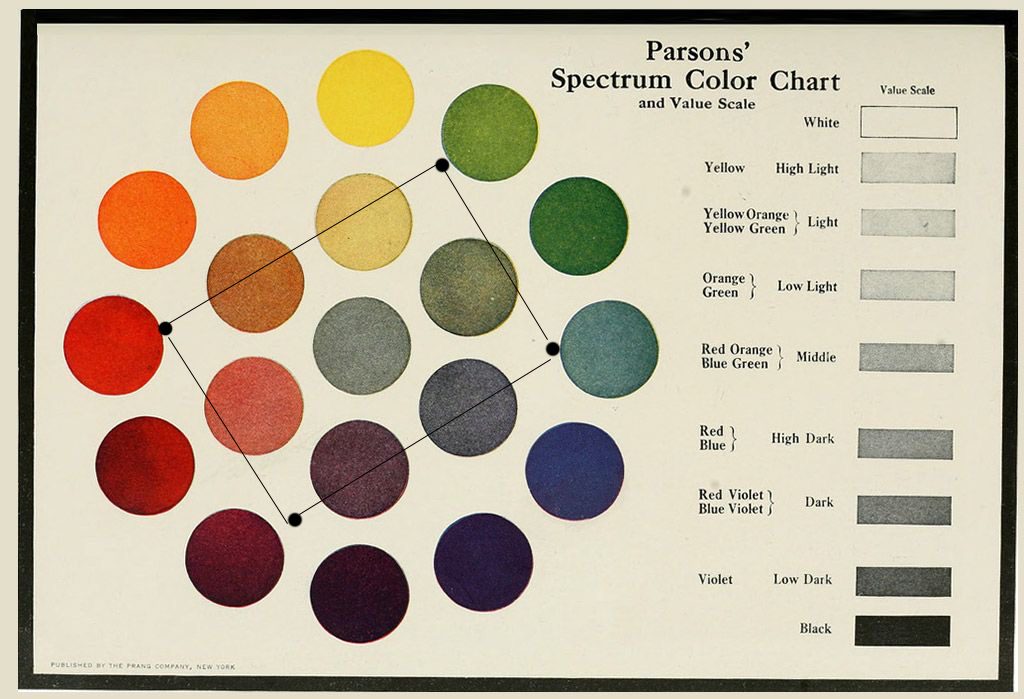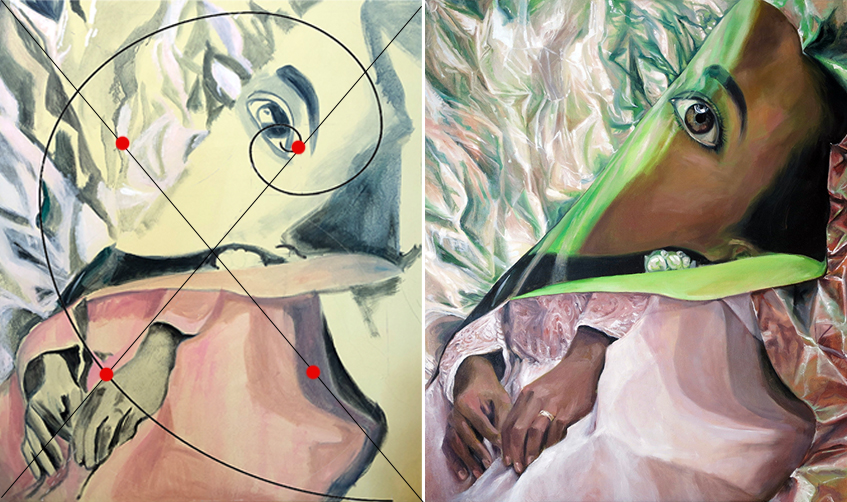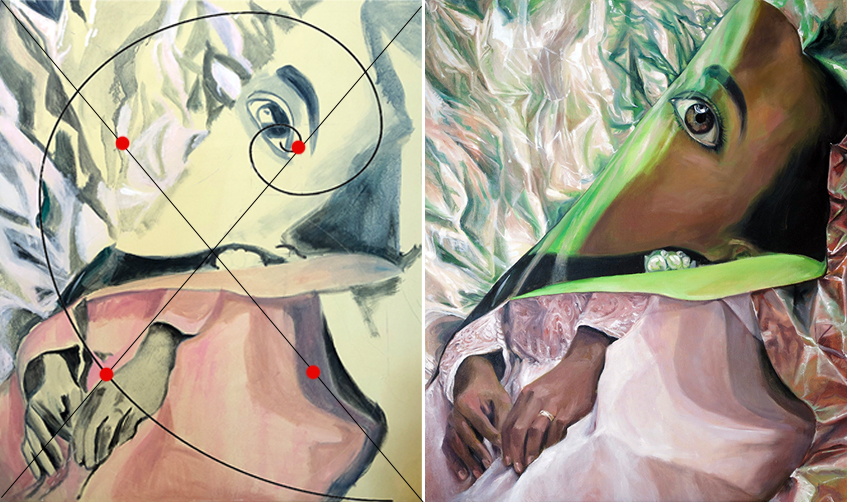Seasoned painters know that it pays to have a plan, an organizing principle to guide creative decisions at the easel.
Even stream of consciousness artists start off with an idea or feeling in mind. And a conceptually driven artist, even one like me who is working from Fluxus boxes set up in the studio, has to have an idea on how to build an image from the ground up.

Here’s how I got from the box still-life to my finished painting, Alchemical Bride 24 (Sojourner Truth).Â
Firstly, I reversed the bride, so the small figure was in front and the large portrait in back. The picture still bent in half, but now I had an all-seeing eye looking at me. Cool!. After a number of sketches, I zeroed in on the green reflections from the plants in my studio as a color prompt.

With green as my anchor color, I picked out a quadratic color scheme to complement the hues I saw in the
I believe in organizing p

Take the Rule of Thirds, a universally appealing way to distribute focal points in a painting, for example. To find my true thirds, I diagonally divide my painting in half in opposite directions. I then divide each leg in half, to find the “eyes” of my thirds. In my composition, the “eyes” are marked in red.

I wanted to create a strong movement from the bride’s vigilant and actively staring

Now look here, I free-handed my Fibonacci spiral, so it’s not a mathematically correct spiral. No doubt, there’s a theorist out there clucking tsk-tsk with disapproval. Know what I say to that? Jimmy-crack corn and I don’t care! My painting is alive and bristling with color, textures, values, and implied narratives. And it moves with the rhythms of the spiral despite the organic imperfections of my hand.
I use chromatic keys and compositional devices as organizing principles like an artist, not like a fascist. Discerning mathematicians and art critics need not freak out.
